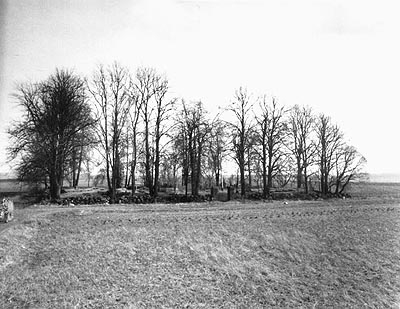
 |
Klykoliai |
Siauliai uzed |
|
|

The following description of the Klykoliai cemetery is from the IAJGS International Jewish Cemetery Project:
CEMETERY: It is in relatively good condition with about 50 tombstones remaining. There is a lot of common surface that seems to indicate that part of the cemetery was destroyed. Most of the tombstones are unreadable or readable only using special techniques. The following names were found: Osher bar Itsahak died 5676; Fruma bat Iehuda Zalman died 7655; Moshe ben Tsvi; Itshak bar Abraham Shneierman, died 5695. 95% of the tombstones are without family names. Source: Aleksandrs Feigmanis, Kahovkas 2-12 LV-1021, Riga. [date?]
CEMETERY: It is in relatively good condition with about 50 tombstones remaining. There is a lot of common surface that seems to indicate that part of the cemetery was destroyed. Most of the tombstones are unreadable or readable only using special techniques. The following names were found: Osher bar Itsahak died 5676; Fruma bat Iehuda Zalman died 7655; Moshe ben Tsvi; Itshak bar Abraham Shneierman, died 5695. 95% of the tombstones are without family names. Source: Aleksandrs Feigmanis, Kahovkas 2-12 LV-1021, Riga. [date?]
UPDATE: The cemetery is in very low ground next to the river dividing Lithuania and Latvia. As such, the ground is very soft; and many of the stones have either become sunken or partially sunken into the ground or completely fallen over. I estimate that if a recovery job were done, there would be found many more than the 50 stones mentioned. Source: Len Yodaiken: shoshly@canaan.co.il [date?]
MASS GRAVES IN MAZEIKIA:
Mazeikiai, Jewish cemetery; 123; pic. # 165-166 US
Commission for the Preservation of America's Heritage Abroad
. The Germans entered Mažeikia (Mazheik) on Wednesday, June 25,
1941. Mass killings of the men occurred on August 3, 1941 and the
women on Saturday, August 9th--a total of possibly 1,000 people.
On the outskirts of the town is a road-sign on the edge of thick
woods is a sign marking the mass grave. A footpath inside the
woods teads to the Jewish cemetery. A large
rock with a memorial plaque on grassy areas with a low
iron fence to mark the site where hundreds of Mazheik
residents lie. Subsequently, none remained. Next to the cemetery,
a series of narrow black granite pillars
a few feet apart hold up a third cross-piece inscribed in
Yiddish to commemorate the slaughter and mass burial site of 4,000
Jewish men, women and children, who perished at that spot with the
Jews of Mazeikiai: Sede
(Siad), Viekshniai
(Veckshna), Tirksliai
(Tirkshla), Zidikai
(Shidik), Pikeliai
(Pikeln), Klykoliai
(Klilul) and other towns. a little further away are several
non-Jewish graves (communists also killed there.) A few feet
behind the tall granite Holocaust memorial is another shorter pair
inscribed in Lithuanian on the top cross-column. [March
2009] The link to IAJGS: https://iajgscemetery.org/eastern-europe/lithuania/klikoliai
 |
 |
 |
 |
 |
 |
 |
||
 |
 |
|
|
Compiled by Richard Kurshan
Last updated October 2019 Copyright © 2009 Richard Kurshan Contact information:rmkurshan@gmail.com  This site is hosted
at no cost by JewishGen, Inc., the Home of Jewish
Genealogy. If you have been aided in your research by
this site and wish to further our mission of preserving
ourhistory for future generations, your
JewishGen-erosity
is greatly appreciated.
|
||